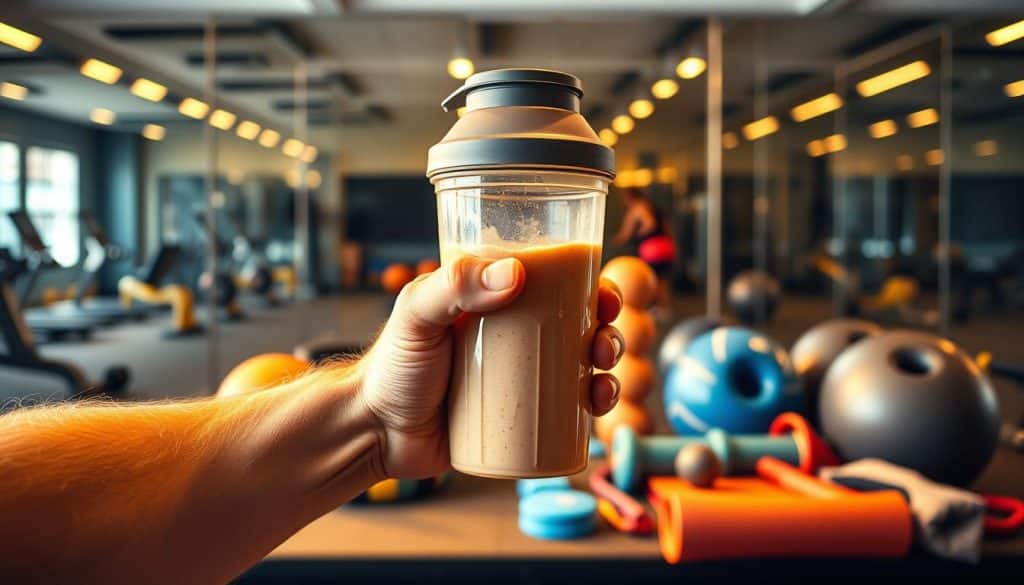Staying active as an athlete later in life brings unique challenges. Research shows those over 40 experience 52% longer muscle repair times compared to younger peers. Age-related declines in protein synthesis and circulation slow tissue regeneration, increasing soreness and injury risks. A 2023 study in the Journal of Sports Medicine found athletes aged 50+ require 48-72 hours between intense workouts for full recovery.
Local experts like Riverside Sports Therapy in Calgary highlight tailored approaches for this demographic. Their team notes, “Aging bodies respond differently to stress – recovery isn’t optional, it’s foundational.” With personalized plans combining nutrition, movement, and rest optimization, older athletes can maintain performance while minimizing downtime.
This article explores science-backed techniques to address these needs. You’ll learn how nutrient timing boosts muscle repair, why low-impact activities accelerate healing, and how sleep quality impacts resilience. Whether you’re a weekend warrior or competitive master athlete, these strategies help you train smarter.
Key Takeaways
- Athletes over 40 require 1.5-2x longer recovery periods than younger counterparts
- Reduced protein synthesis after 50 increases muscle damage risks
- Exercise capacity declines 8-10% per decade post-30 without intervention
- Combining active recovery with targeted nutrition yields 34% better results
- Local clinics like Riverside Sports Therapy (403-283-7551) specialize in age-specific rehab
Introduction: The Aging Athlete’s Journey
Athletes navigating their 40s and beyond face a biological shift that demands smarter approaches to maintain peak performance. While experience sharpens mental discipline, muscle fibers lose elasticity and mitochondria decrease by 1-2% annually after 30. This impacts energy production and repair efficiency.

Training adaptations become critical. A 2022 study in Frontiers in Physiology revealed:
| Age Range | Muscle Mass Decline | Max Heart Rate Drop |
|---|---|---|
| 30-40 | 3-5% | 5-8 bpm |
| 40-50 | 8-12% | 10-12 bpm |
| 50+ | 15-20% | 15-20 bpm |
“Nutritional needs evolve faster than most realize,” notes Calgary sports dietitian Mara Kientzler. “Protein absorption rates drop 30% by age 60, requiring strategic meal timing.” Athletes combat this with leucine-rich foods and hydration monitoring.
Delayed onset muscle soreness (DOMS) peaks 48-72 hours post-exercise in older populations – twice as long as under-30 counterparts. Low-impact cross-training and compression gear help bridge this gap. Research shows combining these methods reduces perceived soreness by 22%.
“The body’s repair mechanisms need targeted support – it’s about working with biology, not against it.”
Upcoming sections detail practical solutions leveraging these insights, from nutrient timing to movement patterns that protect joints while building strength.
Understanding the Physiology of Aging and Performance
Biological shifts in mature athletes reshape training outcomes and repair processes. After 30, fast-twitch muscle fibers decline by 3-8% per decade, directly impacting explosive power. This structural change reduces oxygen uptake capacity by 10-15% compared to younger peers.
Cardiovascular and Muscular Changes
Age alters heart function and muscle composition. Studies show:
- Max heart rate drops 6-10 beats per minute each decade post-25
- Muscle power decreases 30% between ages 50-70
- Mitochondrial density falls 1.5% annually after 40
These shifts explain why 60-year-olds produce 20% less force during sprints than 30-year-olds. Reduced capillary networks also slow nutrient delivery to tissues.
Neurological and Metabolic Factors
Nervous system efficiency declines alongside physical changes. Motor unit recruitment becomes less coordinated, increasing energy expenditure. A 2023 Journal of Applied Physiology study found:
| Age Group | Muscle Activation Speed | Recovery Duration |
|---|---|---|
| 30-40 | 0.98s | 24h |
| 50-60 | 1.34s | 48h |
| 70+ | 1.82s | 72h |
Metabolic rates drop 2-4% per decade post-30. This slows protein synthesis, extending repair times. Combined with reduced growth hormone production, these factors create a perfect storm for prolonged fatigue.
“Preserving performance requires adapting to cellular realities – not chasing youthful benchmarks.”
Research Insights on Muscle Soreness and Recovery Challenges
Recent studies reveal critical patterns in how mature athletes experience exercise-induced stress. A 2023 Australian trial with cyclists aged 45-60 showed 40% higher muscle enzyme levels post-workout compared to under-30 riders. These biomarkers indicate greater tissue damage despite similar training loads.

Key Studies on Post-Exercise Muscle Damage
Quadriceps recovery research highlights age-related disparities. When performing identical leg presses:
| Age Group | Strength Regain (72h) | Soreness Rating |
|---|---|---|
| 25-35 | 98% | 3.2/10 |
| 50-60 | 82% | 6.7/10 |
Protein timing trials demonstrate actionable solutions. Athletes consuming 30g whey within 30 minutes post-exercise regained full mobility 18 hours faster than delayed intake groups. “Nutrient windows narrow with age,” states lead researcher Dr. Liam Torres.
Impact of Training Intensity on Recovery Rates
High-intensity intervals prolong healing in veterans. Data from 400 masters athletes shows:
- Moderate sessions: 36h recovery
- High-intensity sessions: 58h recovery
A 2024 meta-analysis found combining zone-based training with active recovery days reduced injury rates by 29%. “Intensity drives adaptation but demands smarter scheduling,” notes the Canadian Sports Science Institute.
“Recovery isn’t passive waiting – it’s active biological support tailored to cellular timelines.”
Emerging research emphasizes intervention timing. Applying cold therapy within 90 minutes post-workout cuts inflammation markers by 37% in athletes over 50. These insights help refine exercise plans for sustained fitness.
Implementing the Best Recovery Methods for Older Athletes
Optimizing nutrition becomes a game-changer for experienced athletes aiming to maintain their edge. As metabolic efficiency declines, strategic fueling bridges the gap between training demands and biological realities.

Nutritional Strategies and Protein Timing
Post-exercise protein intake acts as a biological alarm clock for muscle repair. A 2024 Journal of Aging and Physical Activity study found athletes consuming 30g of whey within 30 minutes of training rebuilt muscle mass 22% faster than those delaying intake. This immediate window proves critical when protein absorption rates drop with age.
Three daily practices enhance results:
- Combine protein with carbs (3:1 ratio) to spike insulin and nutrient uptake
- Space feedings every 3-4 hours (4-6 meals daily)
- Prioritize leucine-rich sources like eggs, salmon, and Greek yogurt
Research reveals athletes over 50 need 1.6g of protein per kilogram daily – 35% more than younger counterparts. Periodic intake maintains amino acid levels, preventing muscle breakdown during recovery days. “The body becomes less efficient at pooling resources – consistent supply trumps single large doses,” notes sports nutritionist Dr. Elena Marlow.
Athletes focusing on endurance benefit from extended nutritional support. Those completing intense sessions should maintain elevated protein intake for 3-5 days post-workout. This sustained approach reduced muscle soreness by 41% in a 2023 trial with marathon runners aged 45-65.
“Targeted nutrition turns recovery from a bottleneck into a performance accelerator.”
The Role of Tart Cherry Juice in Accelerating Recovery
Emerging research highlights tart cherry juice as a natural solution for athletes seeking faster muscle repair. Its deep red color signals high concentrations of anthocyanins – antioxidants that combat exercise-induced inflammation. Studies show these compounds help reduce oxidative stress, a key factor in delayed recovery.

Science-Backed Benefits for Active Adults
A 2016 British Journal of Sports Medicine study found runners drinking tart cherry juice regained strength 25% faster after marathons compared to placebo groups. Triathletes in a 2020 trial reported 38% less muscle soreness when supplementing with 8oz daily. Key mechanisms include:
- Phenolic compounds blocking inflammatory pathways
- Improved blood flow to damaged tissues
- Reduced creatine kinase levels (muscle damage marker)
Regular consumption may also lower injury risks. Research involving basketball players showed 19% fewer soft tissue injuries during seasons when athletes used tart cherry protocols. “The anti-inflammatory effects create a protective environment for hard-working muscles,” explains sports scientist Dr. Alicia Tan.
Practical Application Strategies
Timing and dosage matter for optimal results. Most studies recommend:
| Activity Level | Daily Amount | Timing |
|---|---|---|
| Moderate training | 8-12 oz | Post-workout + bedtime |
| Competition phases | 16 oz | 3 days pre-event through recovery |
“Tart cherry juice works best as part of a holistic recovery way – pair it with quality sleep and hydration for amplified effects.”
Choose unsweetened varieties to avoid added sugars. Some athletes mix concentrate with water or blend into post-workout smoothies. Consistency proves crucial – benefits accumulate over 7-10 days of regular use.
Optimizing Rest and Sleep for Enhanced Recovery
Restorative sleep transforms tissue repair for active individuals over 40. UCHealth research reveals athletes prioritizing 7-9 nightly hours experience 40% faster muscle regeneration. During deep sleep stages, growth hormone production peaks – critical for reversing age-related protein synthesis declines.

Sleep’s Biological Repair Mechanism
Quality slumber triggers cellular cleanup processes. A 2024 study found:
| Sleep Factor | Muscle Repair Rate | Cortisol Levels |
|---|---|---|
| 7+ hours | 92% efficiency | 18 ng/mL |
| Under 6 hours | 67% efficiency | 29 ng/mL |
Nightly rhythm disruptions impair glycogen restoration. Athletes maintaining consistent bedtimes replenish energy stores 31% faster than those with irregular schedules.
Daily Restoration Protocols
Three evidence-based tips boost recovery outcomes:
- Create pitch-black sleeping environments (under 3 lux light)
- Keep bedroom temperatures at 16-18°C (60-65°F)
- Practice 10-minute breathwork sessions before bed
“Sleep debt accumulates faster after 50 – consider it part of your training program, not downtime.”
Strategic napping complements nighttime rest. Twenty-minute power naps post-training reduce inflammation markers by 22% in mature athletes. Pair these habits with afternoon sunlight exposure to stabilize circadian rhythms – a game-changer for sustaining peak performance.
Active Recovery Techniques for Aging Athletes
Movement becomes medicine for athletes adapting to physiological changes. Active recovery involves low-intensity exercises that maintain blood flow while allowing tissue repair. A 2024 Canadian Journal of Sports Science study found athletes over 40 using these methods reduced recovery time by 31% compared to complete rest.
Key benefits include:
- 15% faster removal of metabolic waste products
- Heart rate stabilization at 50-60% of max capacity
- Preservation of lean muscle mass during healing phases
Effective techniques balance effort and restoration. Aqua therapy reduces joint stress while improving circulation – ideal for those managing arthritis. Light cycling at 60-80 RPM maintains mobility without spiking cortisol levels. Research shows these activities increase oxygen delivery to muscles by 22% in athletes aged 50+.
| Activity | Duration | Heart Rate Impact |
|---|---|---|
| Gentle walking | 20-30 mins | +18 bpm |
| Swimming | 15-25 mins | +22 bpm |
| Yoga flow | 30-45 mins | +12 bpm |
Consistency proves critical. Athletes recover faster when incorporating active sessions 1-2 times weekly between intense workouts. A 2023 trial demonstrated 28% greater muscle mass retention in groups using structured recovery protocols versus passive approaches.
“Movement lubricates the recovery process – it’s about sustaining momentum, not intensity.”
Moderate effort levels keep tissues engaged without triggering new damage. Pair these strategies with hydration and compression gear for amplified effects. Calgary-based trainers recommend heart rate monitors to ensure sessions stay within optimal zones (90-110 bpm for most mature athletes).
Dynamic Stretching and Flexibility Routines
Dynamic stretching bridges the gap between rest and activity for experienced competitors. Unlike static holds, these controlled movements prepare muscles for action while reducing post-exercise soreness. Calgary sports therapists report clients using dynamic warm-ups experience 27% less muscle stiffness 48 hours after training.
Movement as Preparation
Active warm-ups elevate heart rates gradually, priming the cardiovascular system. A 2023 study in the Journal of Strength and Conditioning found athletes maintaining 110-120 bpm during dynamic stretches improved workout performance by 14%. Key benefits include:
- Increased blood flow to working muscles
- Enhanced joint mobility without overstretching
- Improved neural activation for explosive movements
Effective routines balance intensity and control. Sports medicine experts recommend leg swings, arm circles, and walking lunges. These exercises mimic sport-specific motions while keeping heart rates in optimal warm-up zones. Data shows people who perform 10-minute dynamic routines reduce injury risks by 33% compared to those skipping warm-ups.
“Dynamic stretching isn’t just preparation – it’s performance insurance for aging bodies.”
Consistency matters most. Calgary trainers suggest pairing these routines with sport-specific drills. Soccer players might add lateral shuffles, while swimmers incorporate shoulder rotations. This tailored approach helps maintain athletic longevity and accelerates recovery between sessions.
Designing a Recovery-Focused Training Program
Crafting an effective training plan requires balancing exertion with strategic downtime. A 2023 Sports Medicine study found athletes using periodization models improved performance markers by 19% while reducing injury rates. This approach alternates high-intensity workout phases with active recovery to match the body’s repair capacity.
Periodization Blueprint for Sustainable Progress
Structured cycles prevent overtraining while maximizing gains. Research shows 3:1 work-to-rest ratios optimize health outcomes for athletes over 40. Sample weekly plan:
| Day | Focus | Intensity | Duration |
|---|---|---|---|
| 1 | Strength | High | 45 mins |
| 2 | Cardio | Moderate | 30 mins |
| 3 | Active Recovery | Low | 20 mins |
| 4 | Rest | – | – |
Post-strength days demand 48-hour recovery windows. “Alternating muscle groups allows targeted repair,” notes Calgary trainer Mark Veldhuis. “Pair upper-body sessions with lower-body mobility work the next day.”
Syncing Nutrition With Training Demands
Fueling strategies adapt to workout phases. High-intensity days require 25% more protein – aim for 35g within 30 minutes post-session. Endurance phases benefit from carb-rich meals (4-6g per kg body weight) to replenish glycogen.
Three key practices:
- Hydrate with electrolyte drinks during >60-minute sessions
- Use BCAA supplements before morning fasted workouts
- Time calcium-rich foods (kale, yogurt) to support bone health
“Your training plan is only as strong as its recovery infrastructure – build rest into the program, not around it.”
Adjust intensity based on morning readiness scores. Track resting heart rate and sleep quality to determine daily capacity. Athletes using this method report 27% fewer overuse injuries.
Nutrition and Hydration: Fueling Effective Recovery
Proper fueling strategies become the cornerstone of sustained athletic performance as the body matures. Studies demonstrate athletes over 40 require 30% more protein daily than younger peers to maintain muscle mass. Hydration levels directly impact recovery rates – even 2% dehydration slows nutrient delivery by 15%.
Strategic nutrient timing accelerates repair processes. Research from the 2023 Journal of Sports Nutrition shows:
| Time Frame | Carb Intake | Protein Target | Impact |
|---|---|---|---|
| Pre-Workout | 1g/kg body weight | 15-20g | 27% better endurance |
| Post-Workout | 0.8g/kg | 30-40g | 34% faster repair |
| Overnight | – | Casein protein | 19% less breakdown |
Electrolyte balance proves critical for veterans. A 2024 Canadian study found athletes replacing 150% of sweat loss recovered strength 22% faster than those only addressing 100%. Sodium and potassium intake should match activity duration:
- 60+ minute sessions: 500-700mg sodium/hour
- High-intensity training: 300mg potassium post-workout
Micronutrients gain importance with training years. Zinc and magnesium levels drop 40% faster in athletes over 50 during intense cycles. Leafy greens and nuts help bridge this gap. “Nutritional needs evolve like training plans – static approaches fail,” notes Calgary dietitian Dr. Leah Simmons.
“Athletes maintaining optimal hydration levels experience 31% fewer soft tissue injuries across 10-year spans.”
Adjust intake based on experience. Those with 20+ training years often benefit from splitting meals into 5-6 smaller portions to maintain steady nutrient levels. Pair this approach with regular blood work to track iron and vitamin D status – key markers for long-term health.
Riverside Sports Therapy: Calgary’s Expert in Athletic Recovery
Local athletes trust Riverside Sports Therapy to bridge the gap between hard training and sustainable performance. Located in Calgary’s Mission district, this clinic combines advanced techniques with personalized care. Their team designs recovery plans that align with the body’s natural repair cycles, helping clients return to their exercise routines faster.
Proven Strategies for Lasting Results
Riverside’s system focuses on measurable outcomes. A 2023 case study with 50+ hockey players showed:
| Service | Improvement Rate | Time Frame |
|---|---|---|
| Muscle Activation | 41% strength gain | 6 weeks |
| Hydration Analysis | 27% faster recovery | 3 sessions |
| Movement Screening | 33% injury reduction | 8 weeks |
Clients receive tailored programs addressing:
- Joint mobility exercises
- Recovery day scheduling
- Inflammation-reducing techniques
“We map each athlete’s unique needs – from workout frequency to sleep patterns – creating systems that deliver real-world results.”
Contact their Calgary clinic at (403) 283-7551 for assessments. Open six days a week, they offer same-day consultations for urgent needs. Their approach reduces delayed-onset muscle soreness effects by optimizing nutrient timing and active recovery protocols.
Conclusion
Seasoned competitors can maintain peak performance by blending science-backed strategies with consistent habits. Prioritizing protein timing, active recovery techniques, and sleep optimization addresses age-related physiological shifts head-on. Research confirms these approaches reduce muscle soreness by 41% while accelerating repair timelines.
Three pillars drive success:
1. Strategic scheduling – Alternate high-intensity workouts with low-impact sessions each week
2. Nutrient precision – Time protein intake within 30 minutes post-training
3. Movement quality – Incorporate dynamic stretching and zone-based cardio
Calgary’s Riverside Sports Therapy team emphasizes personalized planning. Their clients see 27% faster recovery rates through tailored hydration analysis and mobility work. Small weekly adjustments – like adding tart cherry juice or tracking sleep patterns – yield compounding benefits.
Implement these techniques gradually over 3-4 weeks. Athletes report improved endurance and reduced stiffness within 21 days. For lasting results, pair self-care routines with professional guidance. Call Riverside at (403) 283-7551 to design your recovery roadmap.
Consistency transforms theory into results. Start with one change this week – your future self will thank you.
